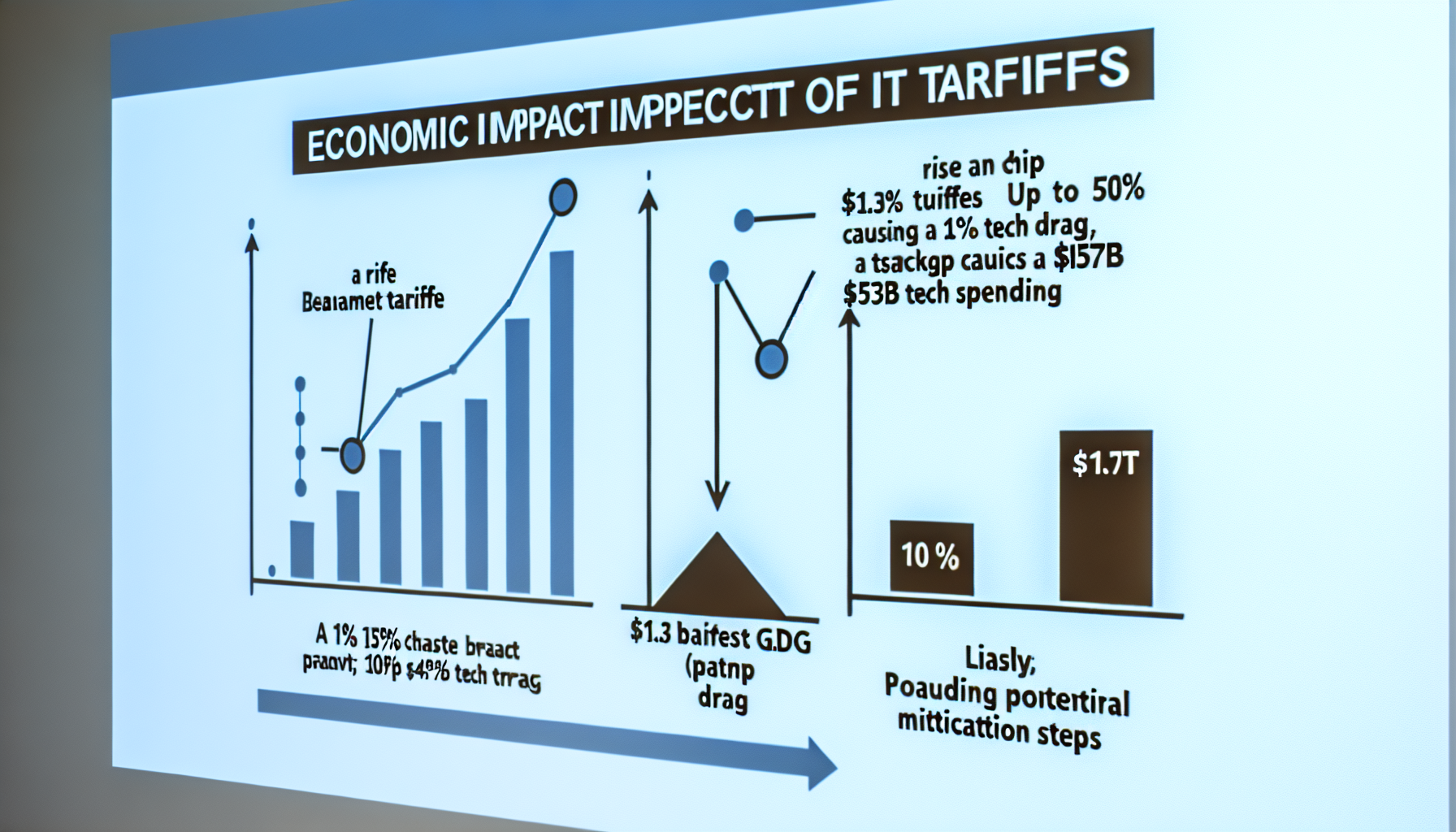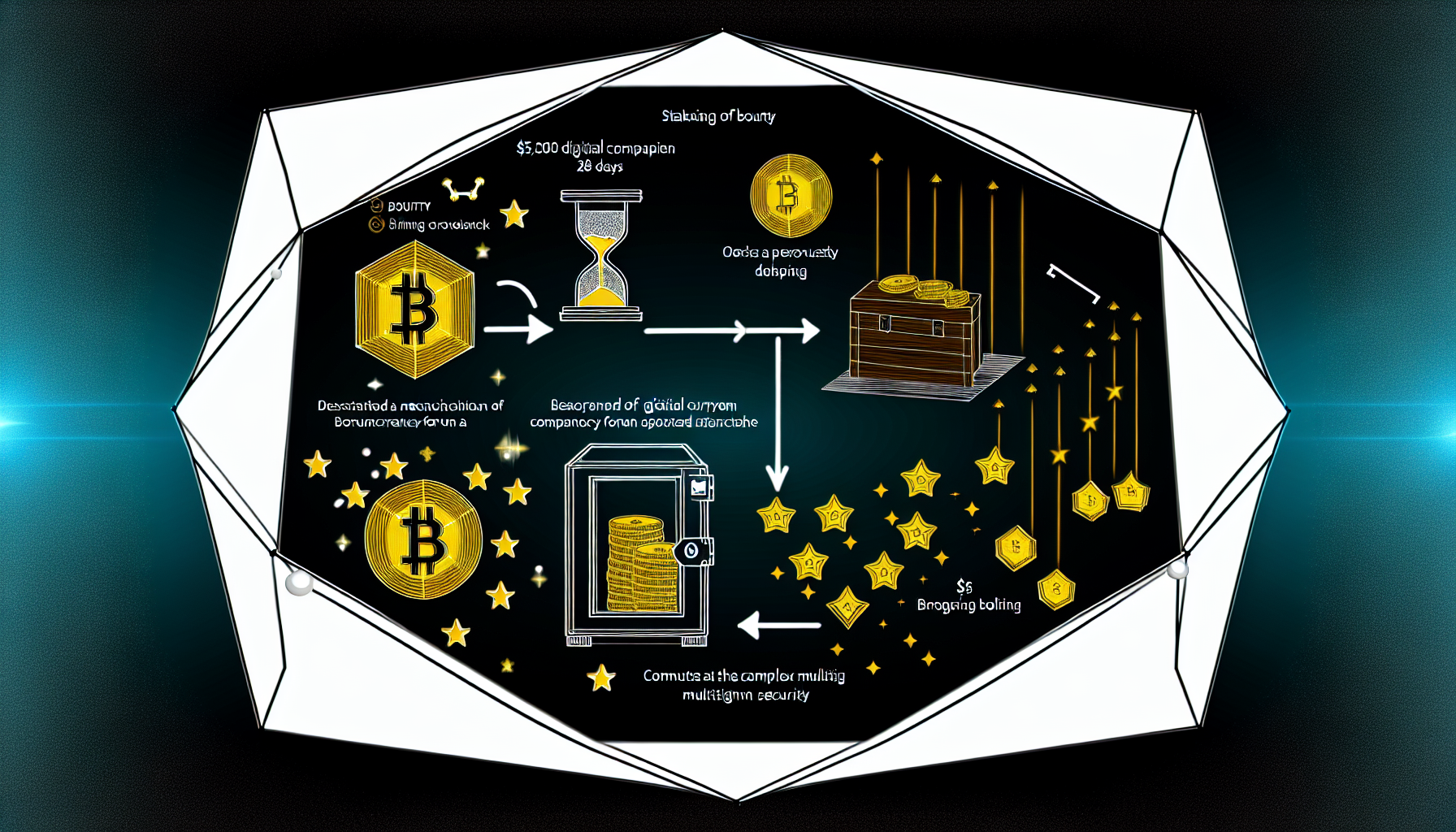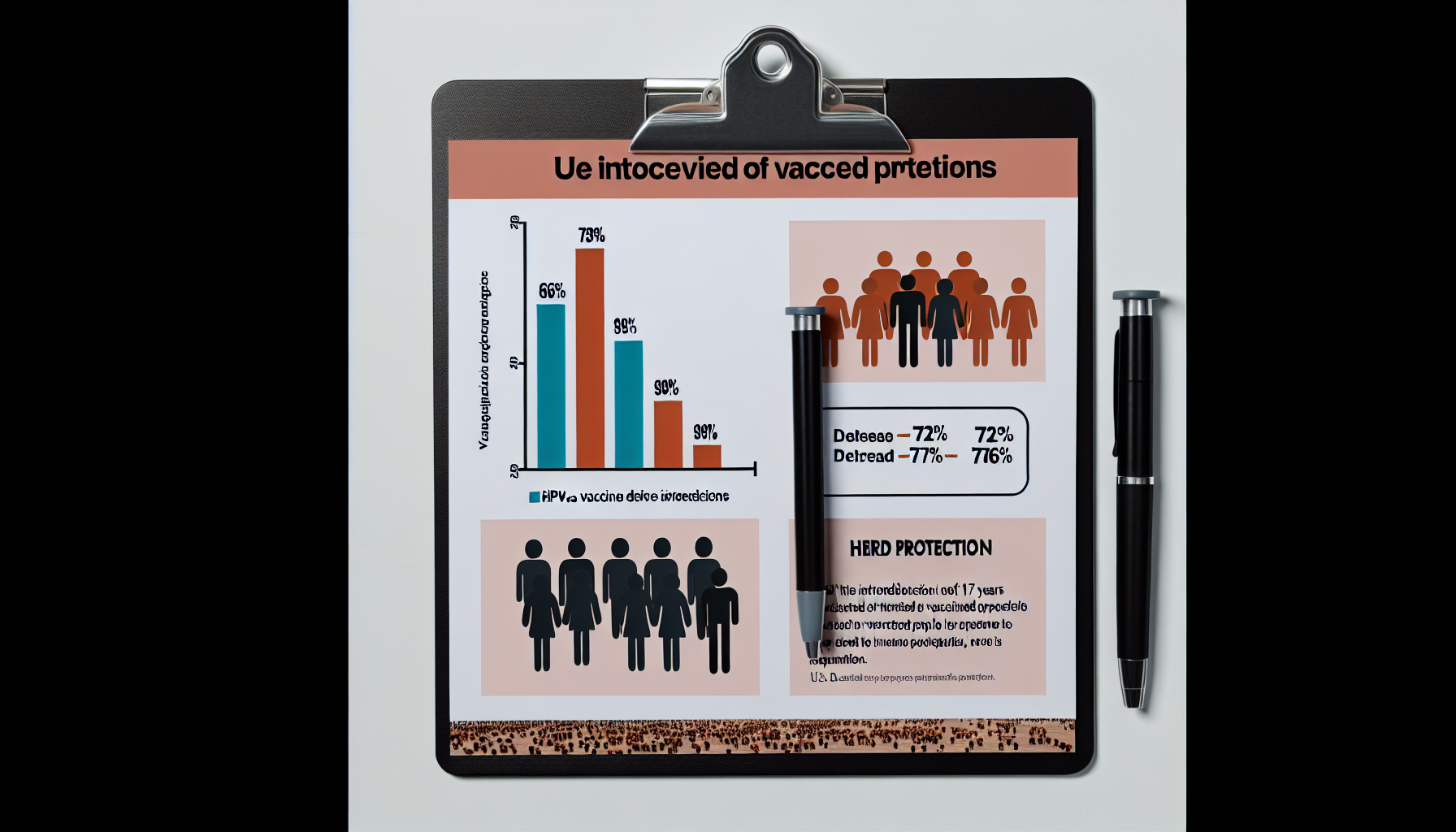If a new wave of IT tariffs lands in 2025, the impact will radiate through chips, devices, corporate budgets, and consumer wallets. The policy signals are increasingly clear: tighter controls on advanced technology supply chains and steeper duties on critical inputs. This report quantifies the most likely exposure to semiconductors and finished electronics, then details practical steps organizations and households can take now to cushion price shocks and preserve digital competitiveness.
Key Takeaways
– shows semiconductor duties scheduled to rise from 25% to 50% by 2025, while EV tariffs hit 100% and CHIPS funding totals $53 billion. – reveals $46.3 billion in 2024 chip imports; a 25% tariff could immediately cut ICT consumption by $11.8 billion, deepening over a decade. – demonstrates a universal 10% baseline tariff took effect April 5, 2025, alongside 25% duties on passenger vehicles announced April 3, 2025. – indicates 2025 consumer tech spending may reach $537 billion, yet proposed tariffs risk slicing $90–$143 billion, lifting smartphones 31% and laptops 34%. – suggests annual “site license” approvals for Samsung and SK Hynix China plants could tighten supply flows and complicate investment decisions year to year.
What the latest signals mean for IT tariffs
Two headline policy signals shape the 2025 outlook. First, a universal 10% baseline tariff on imports took effect on April 5, 2025, following a separate proclamation imposing 25% duties on passenger vehicles effective April 3, 2025, prompting the European Commission to gather input on potential impacts and responses [5].
Second, the U.S. Commerce Department has outlined tariff increases on strategic goods, including a plan to raise semiconductor tariffs from 25% to 50% by 2025 while pairing industrial policy support—nearly $53 billion under the CHIPS and Science Act and a 25% investment tax credit—to reshore capacity and reduce reliance on Chinese supply growth [2].
At the same time, export controls are tightening around advanced chip supply chains: Washington is weighing a move from indefinite authorizations to annual Commerce “site license” approvals for Samsung and SK Hynix to ship chipmaking supplies into their Chinese fabs, a shift that could inject yearly uncertainty into capital planning and materials flow for advanced nodes [1].
How IT tariffs would ripple through chips, devices, and budgets
Semiconductors are the heartbeat of the digital economy—and a tariff target. The United States imported $46.3 billion of semiconductors in 2024; modeling of a 25% chip tariff shows an $11.8 billion immediate reduction in ICT consumption, compounding to a cumulative $1.4 trillion GDP loss by year ten in an escalatory scenario, with ICT consumption down 25.4% if tariffs keep rising [3].
Those magnitudes matter because chip costs cascade into every bill of materials: PCs, servers, networking, industrial controls, medical devices, autos, and consumer electronics. A 25–50% duty on high-value components does not stay confined to wafers; it ripples through OEM pricing, reseller markups, and service contracts, ultimately reshaping IT total cost of ownership. For CIOs, that means refresh cycles slip, capex turns lumpy, and opex rises as maintenance contracts are extended.
Tariffs also interact with export controls. If specialized tools, chemicals, or spare parts require annual approvals to flow into specific fabs, periodic supply friction can constrain output even without headline duty increases. Lead times lengthen, safety-stock needs rise, and buyers face wider price bands between “available now” inventory and scheduled production.
The price tag for households and CIOs
On the demand side, consumer and enterprise wallets face a squeeze. The Consumer Technology Association forecast $537 billion of U.S. consumer tech spending in 2025, but tariff proposals could carve $90–$143 billion from purchasing power; modeled pass-throughs show smartphones up 31%, laptops/tablets up 34%, and game consoles up to 69%, signaling significant device-level inflation risk [4].
Enterprises will not be insulated. Device fleets refresh on predictable cycles; adding 20–35% to end-user hardware pricing can force deferrals, shift procurement toward lower-spec SKUs, or push workloads to “as-a-service” models. Even where list prices are held, more restrictive discounting and shorter quote validity can materialize as vendors manage currency, component, and duty volatility.
Practical steps companies can take if IT tariffs rise
There is no single hedge against IT tariffs, but layered moves can meaningfully reduce exposure and smooth budgets:
– Map your tariff exposure now. Build a SKU-to-HS-code library for all IT and OT hardware, including spares and options. Identify which codes intersect with new or proposed duty lines and export controls. – Scenario price your roadmap. Model landed costs under 10%, 25%, and 50% duties across key categories (servers, storage, PCs, networking, peripherals). Include freight, insurance, and vendor surcharges. – Pre-buy critical spares and long-lead items. Time-bound pulls—before specific tariff effective dates or renewal windows—can lock in lower costs without overstocking whole systems. – Negotiate price-protection clauses. Seek extended quote validity, cap escalators tied to tariff triggers, and substitution rights for alternate SKUs that are tariff-favorable. – Diversify the BOM. Work with OEMs to qualify alternative components or assemblies sourced from tariff-neutral jurisdictions, maintaining performance while reducing duty exposure. – Shift from capex to opex where viable. Consider infrastructure- and device-as-a-service with embedded refresh rights; negotiate that tariff-driven increases are absorbed or limited in multi-year terms. – Use multi-origin sourcing. Contract with distributors holding inventory across regions to arbitrage availability and lead times; specify alternate ship-from points to optimize duties and timelines. – Deploy demand shaping. Extend endpoint lifecycles with memory/SSD upgrades, prioritize thin clients and VDI for knowledge workers, and target high-ROI refreshes for compute-intensive roles. – Strengthen compliance. Confirm HS classifications and country-of-origin rules; document transformations that legitimately change origin. Small errors can trigger retroactive duties and penalties. – Manage FX and logistics. Hedge currencies tied to suppliers, and compare air versus ocean trade-offs; a faster lane may offset tariff-driven scarcity premiums during rollouts.
How to adjust IT purchasing and budgeting in 2025
Refresh planning needs surgical precision. Segment estates by risk: devices with elastic performance needs can slip a quarter or two, while high-density compute for AI, analytics, and ERP should be prioritized to avoid downtime penalties and productivity losses. For deferred refreshes, deploy endpoint management to enforce power, patch, and security baselines that mitigate older hardware risks.
Lock in pricing while vendors still have flexibility. Multi-year enterprise agreements can embed predictable unit pricing and swap rights for equivalent models. Tie maintenance renewals to service-level outcomes rather than list-price indices that could climb with tariffs, and insist on transparency into any duty-related surcharges so you can audit pass-through claims.
Consider cloud and colocation capacity as release valves. If server acquisition costs rise sharply, shifting burst workloads to public cloud or leasing additional colo capacity can bridge a 12–18 month window until pricing stabilizes. Balance these moves with careful total-cost modeling, including egress, reserved instances, and potential vendor lock-in.
Strengthen procurement analytics. Build dashboards for landed cost, lead times, and stockout risk by category and supplier. Integrate tariff scenarios with your demand-forecasting tools so business units see the cost and timing trade-offs in real time. Make cross-functional steering committees standard for any large IT purchase during tariff turbulence.
Scenarios to watch for IT tariffs in 2025
Baseline-with-friction: The universal 10% tariff holds, and export-control approvals become more process-intensive. Expect moderate price inflation and extended lead times on certain components, but stable availability for mainstream devices. Focus on compliance, diversified sourcing, and targeted pre-buys around known approval windows.
Escalation-to-50% chips: Semiconductor duties climb as flagged, raising costs most for compute, networking, and storage—especially at higher performance tiers. OEMs push more cost into the channel, narrowing discounts. Secure price protections early, prioritize performance-per-dollar, and use as-a-service to smooth capex spikes.
Policy whiplash: Annualized approvals and shifting lists create year-to-year volatility. Some SKUs swing from “available” to “allocation” with little notice. Here, dual-qualified designs, alternate SKUs, and distributor inventory programs are decisive. Treat contracts as living documents with change-control clauses for tariff and control updates.
What consumers can do to protect their tech budgets
Households can blunt device sticker shock with timing and flexibility. Shop major sales events early in the cycle if tariff effective dates are approaching, and consider last year’s flagship models that often deliver 90% of performance at a steep discount. Certified-refurbished programs from OEMs and reputable resellers can offer warranty-backed savings without sacrificing reliability.
Stretch device life with inexpensive upgrades—RAM and SSD—where models allow, and maintain battery health on laptops to postpone full replacements. Evaluate carrier and retailer installment plans that lock prices up front, but read fine print on deferred interest and upgrade fees. For gaming, watch bundle values; accessory packages can offset console markups when tariffs squeeze margins.
The bottom line for IT tariffs and digital competitiveness
The policy trend line points to higher and more variable costs for critical digital inputs. Quantitatively, the most rigorous modeling shows five- and ten-figure hits to tech budgets and a potential twelve-figure drag on the broader economy if escalations persist. Practically, the playbook is clear: classify exposure, scenario-plan with landed-cost precision, negotiate protections, diversify sources, and use flexible procurement models.
Done early, these steps shift you from tariff taker to tariff manager. That’s how organizations protect roadmaps—and how households keep essential devices affordable—amid the next chapter of IT tariffs.
Sources:
[1] Reuters – US weighs annual China chip supply approvals for Samsung, Hynix, Bloomberg News reports: www.reuters.com/world/china/us-weighs-annual-china-chip-supply-approvals-samsung-hynix-bloomberg-news-2025-09-08/” target=”_blank” rel=”nofollow noopener noreferrer”>https://www.reuters.com/world/china/us-weighs-annual-china-chip-supply-approvals-samsung-hynix-bloomberg-news-2025-09-08/
[2] U.S. Department of Commerce – FACT SHEET: President Biden Takes Action to Protect American Workers and Businesses from China’s Unfair Trade Practices: https://www.commerce.gov/news/fact-sheets/2024/05/fact-sheet-president-biden-takes-action-protect-american-workers-and [3] Information Technology and Innovation Foundation (ITIF) – Short-Circuited: How Semiconductor Tariffs Would Harm the U.S. Economy and Digital Industry Leadership: https://itif.org/publications/2025/05/21/short-circuited-how-semiconductor-tariffs-would-harm-the-us-economy/
[4] TechCrunch – Consumer tech spending will break records in 2025 if Trump’s tariffs don’t squash it, CTA predicts: https://techcrunch.com/2025/01/06/consumer-tech-spending-will-break-records-in-2025-if-trumps-tariffs-dont-squash-it-cta-predicts/ [5] European Commission (Trade Policy) – Information gathering notice under Regulation (EU) No 654/2014 on new US tariffs on imports originating in or from the EU, and possible EU measures in response: https://policy.trade.ec.europa.eu/consultations/information-gathering-notice-under-regulation-eu-no-6542014-new-us-tariffs-imports-originating-or-eu_en
Image generated by DALL-E 3










Leave a Reply